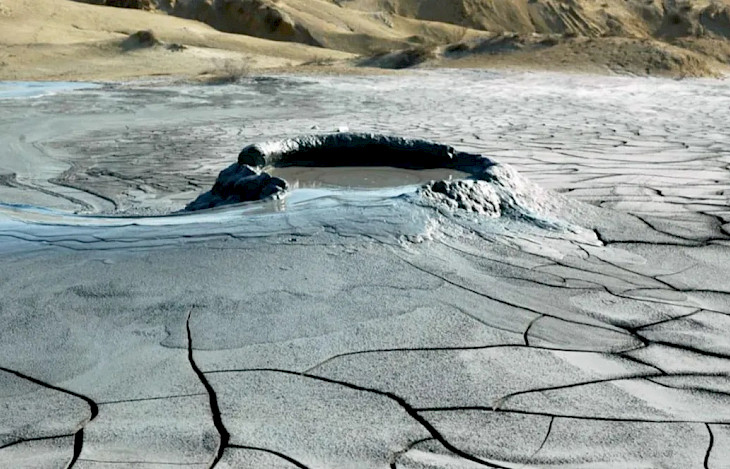Turkmenistan has launched a large-scale scientific initiative to include the unique mud volcanoes Akpatlavuk and Gyokpatlavuk in the UNESCO World Heritage List, reports Turkmenportal.tm.
The first comprehensive expedition in this direction, bringing together the country’s leading specialists, was conducted recently.
The expedition team included representatives of Turkmenistan’s National Commission for UNESCO, biologists, geographers, geologists from the state corporation Turkmengeology, staff from the Ministry of Environmental Protection, and the Caspian Sea Institute.
To prepare the nomination dossier for UNESCO, scientists plan to create a unified national registry of natural heritage sites, including precise parameters and geological locations for each volcano. They aim to update the data from the national atlas of mud volcanoes, last compiled in 1952, which documented 40 volcanic phenomena.
A key aspect of the research involves using modern satellite and remote sensing methods to monitor volcanic activity.
The Akpatlavuk and Gyokpatlavuk volcanoes are located in the coastal area of the Caspian Sea. These ancient geological landmarks are unique natural phenomena of great scientific significance. According to researchers, the formation of these mud volcanoes began 10–12 million years ago due to the shrinking of the ancient Tethys Sea.
A unique feature of the Akpatlavuk volcano, near the village of Esenguly, is its large crater lake, fed by gas and mud springs.
Gyokpatlavuk rises 70 meters above the sandy plain north of Ekere. The volcano's cone, shaped by ravines and channels, constantly evolves under the flow of gas-laden mud.
Scientists have determined that these natural phenomena originate from depths of up to eight kilometers.
In total, Turkmenistan is home to about 12 scientifically significant volcanoes, forming part of a unique natural complex that also spans Azerbaijan and Iran. This region contains nearly half of the world’s known mud volcanoes.
CentralasianLIGHT.org
November 19, 2024

